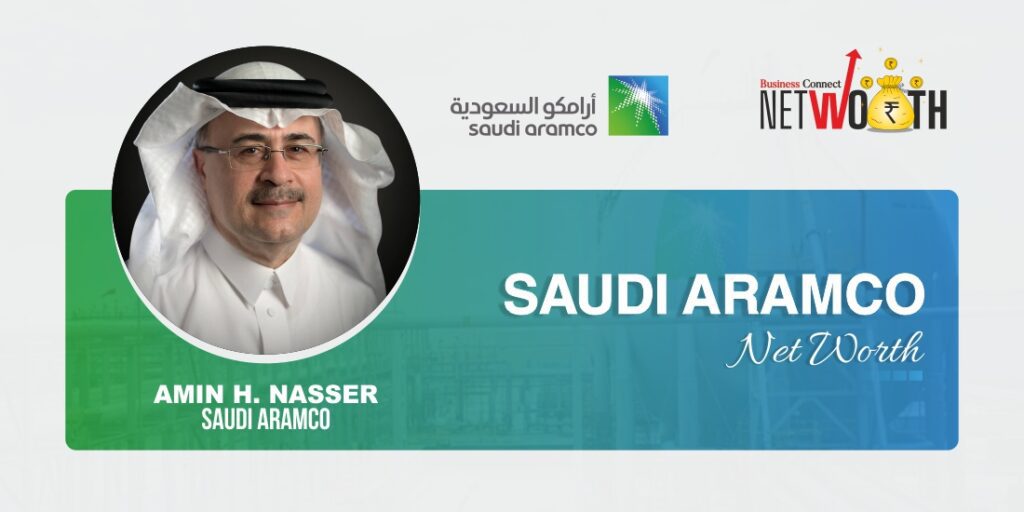Saudi Aramco Net Worth
Saudi Aramco, officially known as the Saudi Arabian Oil Business (formerly Arabian-American Oil Company), is a publicly traded Saudi Arabian oil and gas company with its headquarters in Dhahran. It ranked among the top companies in the world in terms of revenue by 2020. With over 270 billion barrels (43 billion cubic metres) of known reserves, Saudi Aramco has the second-largest crude oil production per day among all oil-producing enterprises. Since 1965, no other firm has contributed more to the world’s carbon emissions than it has.
Saudi Aramco surpassed Apple Inc. briefly to become the biggest (and most valuable) corporation in the world by market cap on May 11, 2022. The Master Gas System, operated by Saudi Aramco, is the world’s biggest single hydrocarbon network. It handles about one hundred oil and gas fields in Saudi Arabia, including 288.4 trillion standard cubic feet (scf) of natural gas reserves, and its crude oil production was 3.4 billion barrels in 2013. Saudi Aramco manages the world’s largest onshore oil field, the Ghawar Field, and the world’s largest offshore oil field, the Safaniya Field.
In December 2019, the company’s shares started trading on the Tadawul stock exchange. The stock soared to 35.2 Saudi riyals, giving it a market value of around US$1.88 trillion, and it exceeded the US$2 trillion barrier on the second day of trade. Saudi Aramco was named the world’s fifth-largest public company in the 2020 Forbes Global 2000. In March 2021, Saudi Aramco announced that earnings in 2020 would be roughly 45% lower than in 2019, due to global lockdowns following the COVID-19 epidemic.
Net Worth and the CEO
Owned by the government of Saudi Arabia (98.5%), Saudi Aramco’s market value is $2.107 trillion as of October 2022. According to data from companiesmarketcap.com, Saudi Aramco is now the second most valuable company in the world by market cap. The market capitalization, often known as market cap, is a measure of a firm’s value that considers all the outstanding shares of a publicly listed company. The largest producer of oil in the world, Saudi Aramco, is led by Amin Hassan Nasser as president and chief executive officer.
Up until September 2015, he served as the company’s acting president and chief executive. As an engineer in the division responsible for oil production, Nasser started working for Saudi Aramco in 1982. He later worked in drilling and reservoir management. The Ras Tanura Producing Department hired him as manager in 1997. Later, he was promoted to manager of the Northern Area Production Engineering Department, together with the Safaniya Offshore and Onshore Producing Departments.
In 2004, he was chosen to be Saudi Aramco’s Chief Petroleum Engineer, and in 2008, he was promoted to Senior Vice President of the Upstream division. In May 2015, Mr. Nasser, the fourth Saudi citizen to lead Aramco, assumed the role in an interim capacity. In September 2015, he was given the title permanently. In September 2019, he oversaw the company’s response to drone and missile strikes on its installations.
Saudi Aramco Competitors
ExxonMobil
ExxonMobil is a multinational oil and gas corporation and energy provider. Its valuation is $ 422.3 billion.
Marathon Oil Company
Founded in 1987, Marathon Petroleum Corporation (MPC) is a petroleum products and renewable fuels company whose valuation is $66.3 billion.
Shell
US-based Royal Dutch Shell is an oil and petrochemical conglomerate which was founded in 1907.
BP
British Petroleum (BP) is a multinational oil and petrochemical corporation with operations in upstream, downstream, and renewables.
History of the Company
The founding of Saudi Aramco dates to 1933 when Saudi Arabia and the Standard Oil Company of California inked a concession agreement (SOCAL). The California Arabian Standard Oil Company (CASOC), a subsidiary business, was established to oversee the contract. Work started right away. Drilling started in 1935 after a search for oil in the Saudi desert.
After years of work with little to show for it, SOCAL management asked its chief geologist, Max Steineke, for guidance in 1937. Steineke instructed them to continue drilling based on his years of field experience. The start of commercial oil production from Dammam No. 7 — the aptly called “Prosperity Well” — in 1938 laid the groundwork for Saudi Arabia’s future prosperity and the success of Saudi Aramco.



